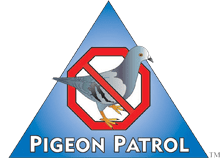We’re not talking about the future anymore. Driverless vehicles are here. In the latest example, in Catalonia, Spain, an autonomous bus called Èrica is being tested around the region to help citizens become familiar with what driverless technology entails.
These bus experiments are also designed to allow local-government officials to adapt to this new means of transportation, which they expect to be fully functioning by 2020.
Equipped with eight sensors, the red and yellow self-driving shuttle unveiled by the Association of Municipalities for Mobility and Urban Transport, AMTU, is 100 percent electrically powered with 14 hours of autonomous driving. It’s air-conditioned and suitable for reduced-mobility passengers.
Looking like a rectangular minivan, Èrica can transport up to 11 passengers and an attendant, who is there to help and advise travelers and deal with emergencies.
Some 4,600 citizens from Sant Cugat, Terrassa, and Sabadell, all cities close to Barcelona, already took the new bus in September. Now AMTU plans to bring it to Girona, El Vendrell, Reus, Martorell, and Vic in October.
However, preparing the bus for these new routes takes time. Before it can begin to carry passengers, Èrica, which stands for electric, revolutionary, intelligent, shared (compartit in Catalan) and amicable, needs two days of preparation, as it has to record the route to be driven in detail using GPS.
Once the bus has been prepared for its new route, passengers can board and have the choice of standing or using one of the six available seats.
On the road, laser sensors help the bus detect unexpected obstacles in its path, such as passers-by or even pigeons. It’s reassuring that the vehicle cannot run anything over, but the safety features also mean it is constantly stopping and starting.
As part of those safety features, the bus is also limited to a maximum speed of 18km/h, or 11mph. This restriction is also to protect standing passengers from sudden braking.
The speed limit is also because the urban environment is complex. With no bicycles, skateboards, scooters, passers-by, cats, dogs, or birds, the bus could in theory travel at speeds of up to 40km/h, or 25mph.
AMTU director Joan Prat tells ZDNet that the shuttle is able to ‘see’ what happens within 200 meters and is programmed to come to a rapid halt, if necessary, when it detects an object at less than 30 centimeters.
However, he also acknowledges that certain weather conditions remain a problem. “In case of heavy rain, the vehicle detects [the water as] an unidentified object, so it can’t operate.”
In the near future, cameras located on the roof will be able to identify exactly what the object encountered is, he adds.
Those issues are among the reasons why, for now, these self-driving shuttles are only be used for pre-checked routes and as first- or last-mile systems, to connect a train station to the city center or vice versa, or work in restricted traffic environments, for example.
“Shuttles like Èrica are designed to complement the current transport network and not to replace any line,” Prat says.
In France, the RATP group conducted similar experiments with EZ10 shuttles in Paris last year and is continuing its automation program in the region this year with a bigger bus driving itself to the depot. Stockholm and Dublin have also hosted pilot programs.
Pere Calvet, general manager of Catalonian railway company FGC, says automation technology is here to stay.
“We still need to overcome hurdles, such as legislation, and carefully deal with moral issues as well as the coexistence of people and machines in the urban environment,” he says.
“But the shift to a more sustainable mobility is necessary and unstoppable.”
Progress certainly has to be made, as polluting emissions in Spain shot up 4.5 percent in 2017, the biggest increase since the Kyoto protocol came into force.
About Pigeon Patrol:
Pigeon Patrol Products & Services is the leading manufacturer and distributor of bird deterrent (control) products in Canada. Pigeon Patrol products have solved pest bird problems in industrial, commercial, and residential settings since 2000, by using safe and humane bird deterrents with only bird and animal friendly solutions. At Pigeon Patrol, we manufacture and offer a variety of bird deterrents, ranging from Ultra-flex Bird Spikes with UV protection, Bird Netting, 4-S Gel and the best Ultrasonic and audible sound devices on the market today.
Voted Best Canadian wholesaler for Bird Deterrent products four years in a row.
Contact Info: 1- 877– 4– NO-BIRD (www.pigeonpatrol.ca)
